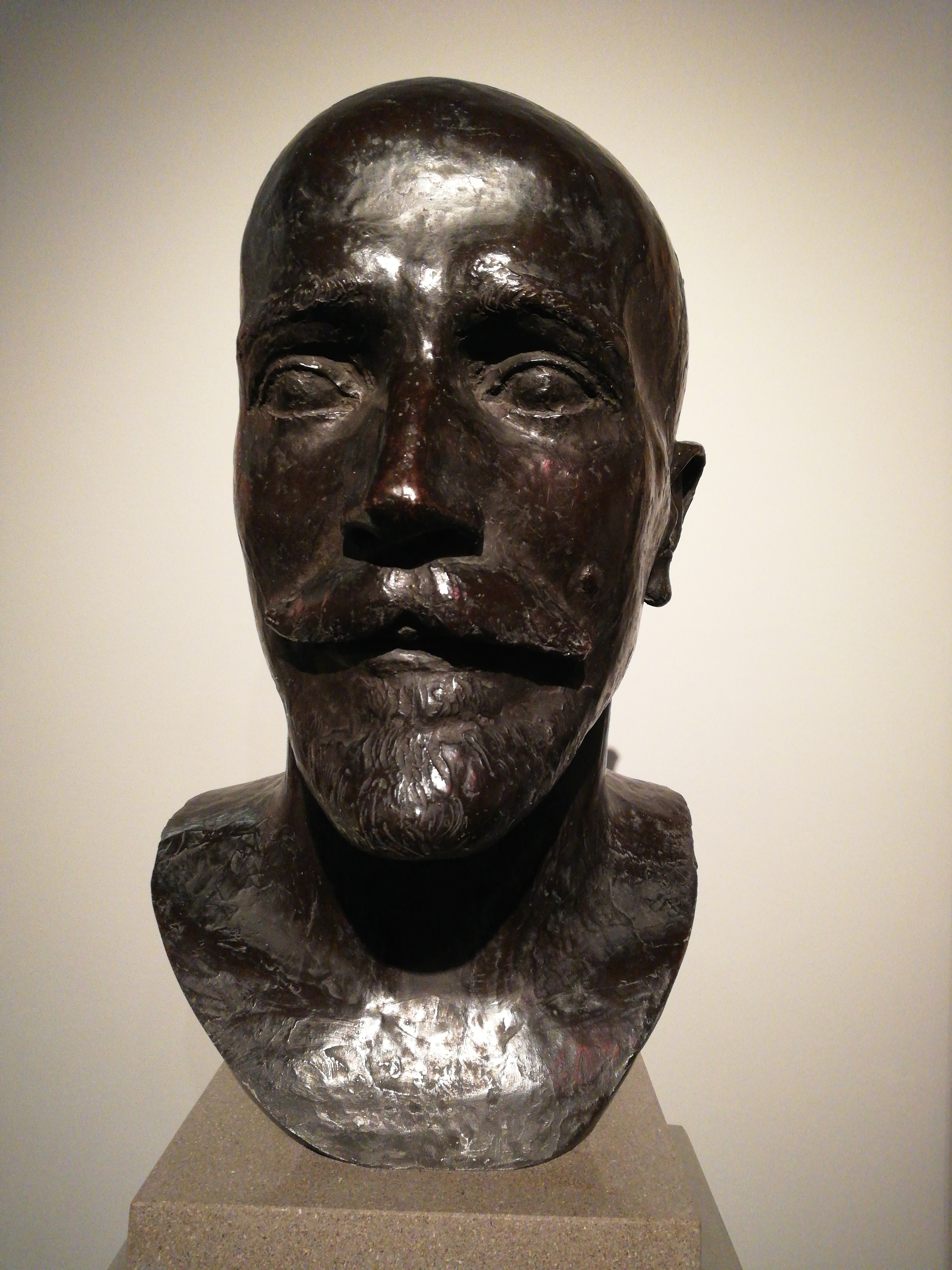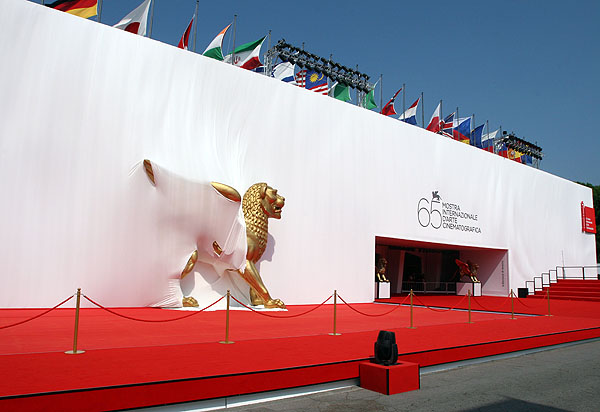|
Athanase Apartis
Athanase Apartis ( el, Αθανάσιος Απάρτης, 24 October 1899 – 1 April 1972) was a Greek sculptor. His busts of famous people and monumental works stand in many public places in Greece. Life Athanase Apartis was born on 24 October 1899 in Smyrna, Asia Minor, son of a tailor who had six children. He often worked in the studio of Papazian, an Armenian sculptor who had studied in Rome and Venice. He was given lessons by the painter Vasilis Ithakisios. He moved to Paris in 1919, and began to study at the Académie Julian. In October 1919 he was admitted to the École des Beaux Arts, but stayed there only two months before returning to the Academie Julian, where he studied for two years with Paul Landowski and Henri Bouchard. Apartis showed three works in the Salon d'Automne in 1921. There he met Antoine Bourdelle and decided to transfer from the Academie Julian to the Grande Chaumière, where he studied for four years before leaving in 1925 without graduating. Bourd ... [...More Info...] [...Related Items...] OR: [Wikipedia] [Google] [Baidu] |
Smyrna
Smyrna ( ; grc, Σμύρνη, Smýrnē, or , ) was a Greek city located at a strategic point on the Aegean coast of Anatolia. Due to its advantageous port conditions, its ease of defence, and its good inland connections, Smyrna rose to prominence. The name of the city since about 1930 is İzmir. Two sites of the ancient city are today within Izmir's boundaries. The first site, probably founded by indigenous peoples, rose to prominence during the Archaic Period as one of the principal ancient Greek settlements in western Anatolia. The second, whose foundation is associated with Alexander the Great, reached metropolitan proportions during the period of the Roman Empire. Most of the present-day remains of the ancient city date from the Roman era, the majority from after a second-century AD earthquake. In practical terms, a distinction is often made between these. ''Old Smyrna'' was the initial settlement founded around the 11th century BC, first as an Aeolian settlement, and l ... [...More Info...] [...Related Items...] OR: [Wikipedia] [Google] [Baidu] |
Athens School Of Fine Arts
The Athens School of Fine Arts (ASFA; el, Ανωτάτη Σχολή Καλών Τεχνών, ΑΣΚΤ, literally: Highest School of Fine Arts), is Greece's premier Art school whose main objective is to develop the artistic talents of its students. History The Athens School of Fine Arts was established on 12 January 1837, known as the ''School for the Arts''. In the beginning the School of Arts included three departments: the Crafts' School (part-time school), Industrial Crafts' School (full-time school) and Fine Arts School (full-time higher education). The third department was the real ancestor of today’s School of Fine Arts and began to function as a daily school in 1840. In this department subjects like painting, sculpture, architecture, lithography, woodcut, geometry and cartography were taught. The same year Duchess of Plaisance who lived in Greece contributed in upgrading the school. She enriched the school's program with new types of painting lessons and called the Frenc ... [...More Info...] [...Related Items...] OR: [Wikipedia] [Google] [Baidu] |
Angelos Sikelianos
Angelos Sikelianos ( el, Άγγελος Σικελιανός; 28 March 1884 – 19 June 1951) was a Greek lyric poet and playwright. His themes include Greek history, religious symbolism as well as universal harmony in poems such as ''The Moonstruck'', ''Prologue to Life'', ''Mother of God'', and ''Delphic Utterance''. His plays include '' Sibylla'', '' Daedalus in Crete'', '' Christ in Rome'', '' The Death of Digenis'', '' The Dithyramb of the Rose'' and ''Asklepius''. Although occasionally his grandiloquence blunts the poetic effect of his work, some of Sikelianos finer lyrics are among the best in Western literature. Every year from 1946 to 1951, he was nominated for the Nobel Prize for Literature. Biography Sikelianos was born in Lefkada where he spent his childhood. In 1900, he registered to the Athens Law School but never graduated. In the course of the following years, he traveled extensively and devoted himself to poetry. In 1907, he married the American Eva Palmer in th ... [...More Info...] [...Related Items...] OR: [Wikipedia] [Google] [Baidu] |
Nikos Kazantzakis
Nikos Kazantzakis ( el, ; 2 March ( OS 18 February) 188326 October 1957) was a Greek writer. Widely considered a giant of modern Greek literature, he was nominated for the Nobel Prize in Literature in nine different years. Kazantzakis's novels included '' Zorba the Greek'' (published in 1946 as ''Life and Times of Alexis Zorbas''), '' Christ Recrucified'' (1948), ''Captain Michalis'' (1950, translated Freedom or Death), and '' The Last Temptation of Christ'' (1955). He also wrote plays, travel books, memoirs, and philosophical essays, such as '' The Saviors of God: Spiritual Exercises''. His fame spread in the English-speaking world due to cinematic adaptations of '' Zorba the Greek'' (1964) and '' The Last Temptation of Christ'' (1988). He translated also a number of notable works into Modern Greek, such as the ''Divine Comedy'', ''Thus Spoke Zarathustra'', ''On the Origin of Species'', and Homer's ''Iliad'' and ''Odyssey''. Biography When Kazantzakis was born in 1883 i ... [...More Info...] [...Related Items...] OR: [Wikipedia] [Google] [Baidu] |
Pedion Tou Areos
The Pedion tou Areos or Pedion Areos ( el, Πεδίον του Άρεως or Πεδίον Άρεως, , meaning ''Field of Ares'', corresponding to the French ''Champ de Mars'' and the ancient ''Campus Martius'') is one of the largest public parks in Athens, Greece. It is also the name of the wider neighborhood. Park The park was designed in 1934 and its purpose was to honor the heroes of the Greek Revolution of 1821, 21 of whom are depicted in marble busts standing in the park. The initial plan included the construction of a "Pantheon" for the revolutionaries and also a major Christian temple, dedicated to Greek independence. The park is a state-owned public ground, covering an area of 27.7 hectares, and is located about 1 km NE from the Omonoia Square. Today, it is enclosed by the streets Mavromateon, Evelpidon, Pringiponisson and the Alexandras Avenue. In front of the main entrance of the park there has been an equestrian statue of king Constantine I since 1938.http://w ... [...More Info...] [...Related Items...] OR: [Wikipedia] [Google] [Baidu] |
Odysseas Androutsos
Odysseas Androutsos ( el, Οδυσσέας Ανδρούτσος; 1788 – 1825; born Odysseas Verousis el, Οδυσσέας Βερούσης) was a Greek military and political commander in eastern mainland Greece and a prominent figure of the Greek War of Independence. He grew up in the court of Ali Pasha of Tepelena and was one of his commanders. In 1818 he joined the Greek revolutionary organization Filiki Eteria. After Ali Pasha's defeat, he joined the Greek War of Independence and was distinguished as a commander in the Battle of Gravia Inn in 1821. As a result of the battle, he was appointed military commander of eastern mainland Greece by the Greek revolutionary government. In 1825, after falling out with the rebels, he asked for amnesty from the Imperial court and joined the Ottomans. In a battle near Livadeia, he was captured by the units of the revolutionary army and executed a few days later. Scholars have variously described him as a hero or a traitor to the Greek c ... [...More Info...] [...Related Items...] OR: [Wikipedia] [Google] [Baidu] |
Ioannis Psycharis
Ioannis (Yiannis) Psycharis (Greek: Ιωάννης (Γιάννης) Ψυχάρης; French: ''Jean Psychari''; 1854–1929) was a French philologist of Greek origin, author and promoter of Demotic Greek. Biography Psycharis was born on 15 May 1854 in Odessa (in modern-day Ukraine, then part of the Russian Empire), in a merchant family of Chiot descent. His mother died when he was a child, and he was raised by his grandmother in Marseille. He also spent some time with his father in Constantinople and later moved to Paris. He studied at the École des langues orientales. Career Psycharis was director of studies at the École pratique des hautes études after 1885, and then professor at the École des langues orientales from 1903 to 1928, succeeding . In 1886, he made a trip to Greece out of which he wrote ''My Journey'', advocacy of Demotic Greek (with some remarks on the Ancient Greek pronunciation), which connected it with the national integration (''Megali Idea''). So he be ... [...More Info...] [...Related Items...] OR: [Wikipedia] [Google] [Baidu] |
Municipal Art Gallery Of Ioannina
The Municipal Art Gallery of Ioannina ( el, Δημοτική Πινακοθήκη Ιωαννίνων) is an art museum in Ioannina, Greece that has been open in its current building since 2000. The collection of over 500 items ranges from classical to modern paintings and sculptures. Location Since 2000 the gallery has been housed in the Pyrsinella Mansion at 1 Korai Street & 28 October Street in Ioannina. This is a neoclassical building dating to around 1890. Neoclassical elements include the lintels, balcony corbels and window frames. It was built by the engineer Vergoti for the bibliophile and art lover Basil Pyrsinella, who was mayor of the town for many years in the 1920s and 1930s. He left all his fixed and movable property to the municipality in 1958. History The gallery first opened in 1960 in the Mela building, and was the first regional municipal gallery in Greece. The collection grew in part through purchase but mostly through donations from collectors and artists. In ... [...More Info...] [...Related Items...] OR: [Wikipedia] [Google] [Baidu] |
National Gallery Of Greece
The National Gallery ( el, Εθνική Πινακοθήκη, ''Ethniki Pinakothiki'') is an art museum located on Vasilissis Sofias avenue in the Pangrati district, Athens, Greece. It is devoted to Greek and European art from the 14th century to the 20th century. The newly renovated building reopened after an 8 year refurbishment, on 24 March 2021, a day before the 200th anniversary of the Greek War of Independence. History It was established in 1878 as a small collection of 117 works exhibited at the Athens University. In 1896, Alexandros Soutzos, a jurist and art lover, bequeathed his collection and estate to the Greek Government aspiring to the creation of an art museum. The museum opened in 1900 and the first curator was Georgios Jakobides, a famous Greek painter who was a member of the Munich School artistic movement. After World War II the works began for a new building. After relocating the sculptures in the new National Glyptotheque, there is a discussion to re ... [...More Info...] [...Related Items...] OR: [Wikipedia] [Google] [Baidu] |
Venice Biennale
The Venice Biennale (; it, La Biennale di Venezia) is an international cultural exhibition hosted annually in Venice, Italy by the Biennale Foundation. The biennale has been organised every year since 1895, which makes it the oldest of its kind. The main exhibition held in Castello, in the halls of the Arsenale and Biennale Gardens, alternates between art and architecture (hence the name ''biennale''; ''biennial''). The other events hosted by the Foundationspanning theatre, music, and danceare held annually in various parts of Venice, whereas the Venice Film Festival takes place at the Lido. Organization Art Biennale The Art Biennale (La Biennale d'Arte di Venezia), is one of the largest and most important contemporary visual art exhibitions in the world. So-called because it is held biannually (in odd-numbered years), it is the original biennale on which others in the world have been modeled. The exhibition space spans over 7,000 square meters, and artists from ov ... [...More Info...] [...Related Items...] OR: [Wikipedia] [Google] [Baidu] |






